![]() May
May
Please read the important notes on collecting.
Now the days are getting longer and warmer, what greater
incentive to enjoy a country walk in Spring. This month we look
at more nature in close-up. A wealth of animal life can be found
in mosses, particularly sphagnum. Fungi are not just an autumn
attraction. The flowers of grasses and rushes are complex but
often attractive in close-up.
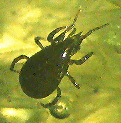 In previous walks we have looked at the basic
structure of mosses and seen how fascinating they are to study in
close-up. However, this is only part of their fascination. Did
you know that a whole microcosm of animal life lives in mossy
habitats, including protozoa, rotifers, water bears
(tardigrades), nematodes (worms) and small insects and
arthropods.
In previous walks we have looked at the basic
structure of mosses and seen how fascinating they are to study in
close-up. However, this is only part of their fascination. Did
you know that a whole microcosm of animal life lives in mossy
habitats, including protozoa, rotifers, water bears
(tardigrades), nematodes (worms) and small insects and
arthropods.
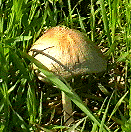 The
larger fungi, commonly known as mushrooms or toadstools are
usually associated with autumn (the fall). However, there are
many species that can be found throughout the year. The best
places to look are permanently damp habitats such as rotting tree
stumps, the leaf litter under trees and even cattle droppings
which are exploited by specific species.
The
larger fungi, commonly known as mushrooms or toadstools are
usually associated with autumn (the fall). However, there are
many species that can be found throughout the year. The best
places to look are permanently damp habitats such as rotting tree
stumps, the leaf litter under trees and even cattle droppings
which are exploited by specific species.
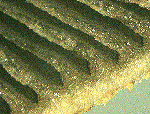 As long as
appropiate care is taken in handling, because some are poisonous,
they can be admired using a hand lens. The underside of the cap
is of particular interest. The image left shows a cross section
through the gills where spores are produced. If the fungus is
ripe a 'spore print' can be produced by leaving the cap with stem
removed on a piece of white paper overnight. A print of the gill
structure will be produced.
As long as
appropiate care is taken in handling, because some are poisonous,
they can be admired using a hand lens. The underside of the cap
is of particular interest. The image left shows a cross section
through the gills where spores are produced. If the fungus is
ripe a 'spore print' can be produced by leaving the cap with stem
removed on a piece of white paper overnight. A print of the gill
structure will be produced.
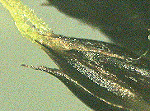 The
grasses that form our carefully tended garden lawns rarely get
the chance to develop flowers, so we may forget how attractive
their flowers can be in close up. A 'grass' that flowers early in
the year is the field wood-rush Luzula campestris. I use
'grass' loosely here, it is in fact a member of the rush family
Juncacea. It is a low growing plant amongst grass but may be
spotted by the chestnut coloured flowers (still in bud in the
images) and the distinctive yellow anthers shown in close-up on
the right.
The
grasses that form our carefully tended garden lawns rarely get
the chance to develop flowers, so we may forget how attractive
their flowers can be in close up. A 'grass' that flowers early in
the year is the field wood-rush Luzula campestris. I use
'grass' loosely here, it is in fact a member of the rush family
Juncacea. It is a low growing plant amongst grass but may be
spotted by the chestnut coloured flowers (still in bud in the
images) and the distinctive yellow anthers shown in close-up on
the right.
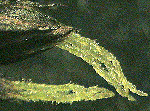 As
spring advances into summer keep an eye on the grasses that come
into flower in the countryside and admire the complexity and
delicate construction of their flowers, you don't need to
identify them to enjoy them!
As
spring advances into summer keep an eye on the grasses that come
into flower in the countryside and admire the complexity and
delicate construction of their flowers, you don't need to
identify them to enjoy them!
Microscopic Life in Sphagnum
by M Hingley. Richmond Publishing Co., UK, 1993.
This little book is a real gem and introduces the common types of
organism likely to be found. Well illustrated with keys and
suggestions for projects.
Collins Guide to Grasses, Rushes and Ferns by R Fitter and A Fitter. Collins, London 1984. A good illustrated identification guide for UK and N. Europe. The illustrations should allow identification to genus at least. The keys are not that reliable in the authors experience!
Fungi are becoming increasing popular to study and a range of guides should be available in the local library or bookshop.
Macro images were taken using a CCD camera attached to the
eyepiece tube of a stereo microscope using a x1 paired objective
with no eyepiece. Camera images were transferred to the PC using
a Creative Video Spigot capture card.
Close-up of fungi and catkin captured from video filmed by
Maurice Smith....thanks Maurice (our Editor!).
Image manipulation using Photostyler v2.0 software.
Return to Micscape Magazine Front Page
The author Dave Walker
is a UK based amateur naturalist keen to encourage people to
explore nature in close-up.